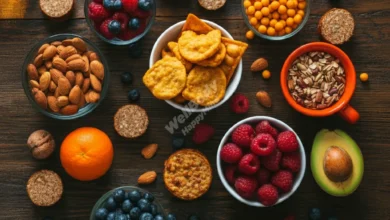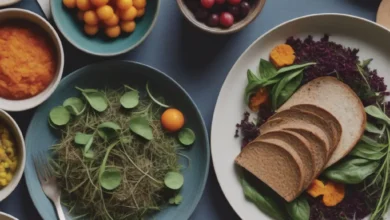Sprouted Strength: The Nutritional Power of Living Foods
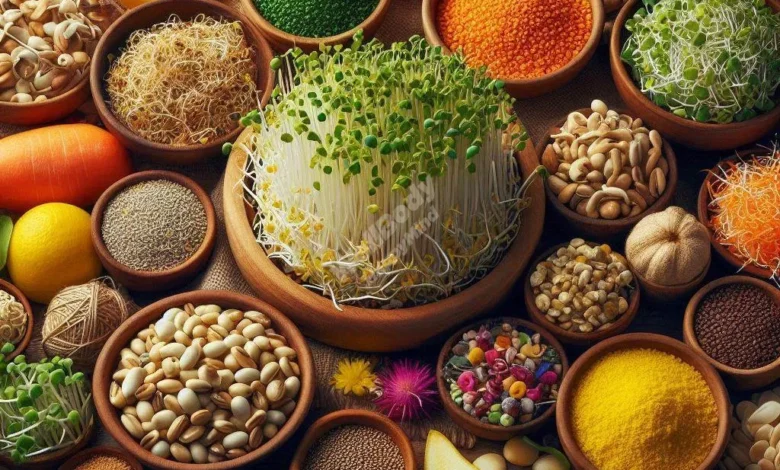
I. Introduction
Did you know that some foods can continue growing even after they’ve been harvested? Welcome to the world of living foods! These nutrient-packed powerhouses, especially sprouted foods, are taking the health world by storm.
In this article, we’ll dive into the fascinating realm of sprouted foods nutrition and explore the amazing benefits of living foods. You’ll discover how these tiny sprouts can make a big difference in your health and learn easy ways to incorporate sprouts in your diet. Get ready to supercharge your meals with nature’s living vitamins!
II. What Are Living Foods?
A. Definition and examples
Living foods are fresh, raw foods that are still alive and growing when you eat them. These foods are packed with energy and nutrients. Some examples include:
- Sprouts (like alfalfa or broccoli sprouts)
- Microgreens
- Fresh fruits and vegetables
- Raw nuts and seeds
- Fermented foods (like sauerkraut or kimchi)
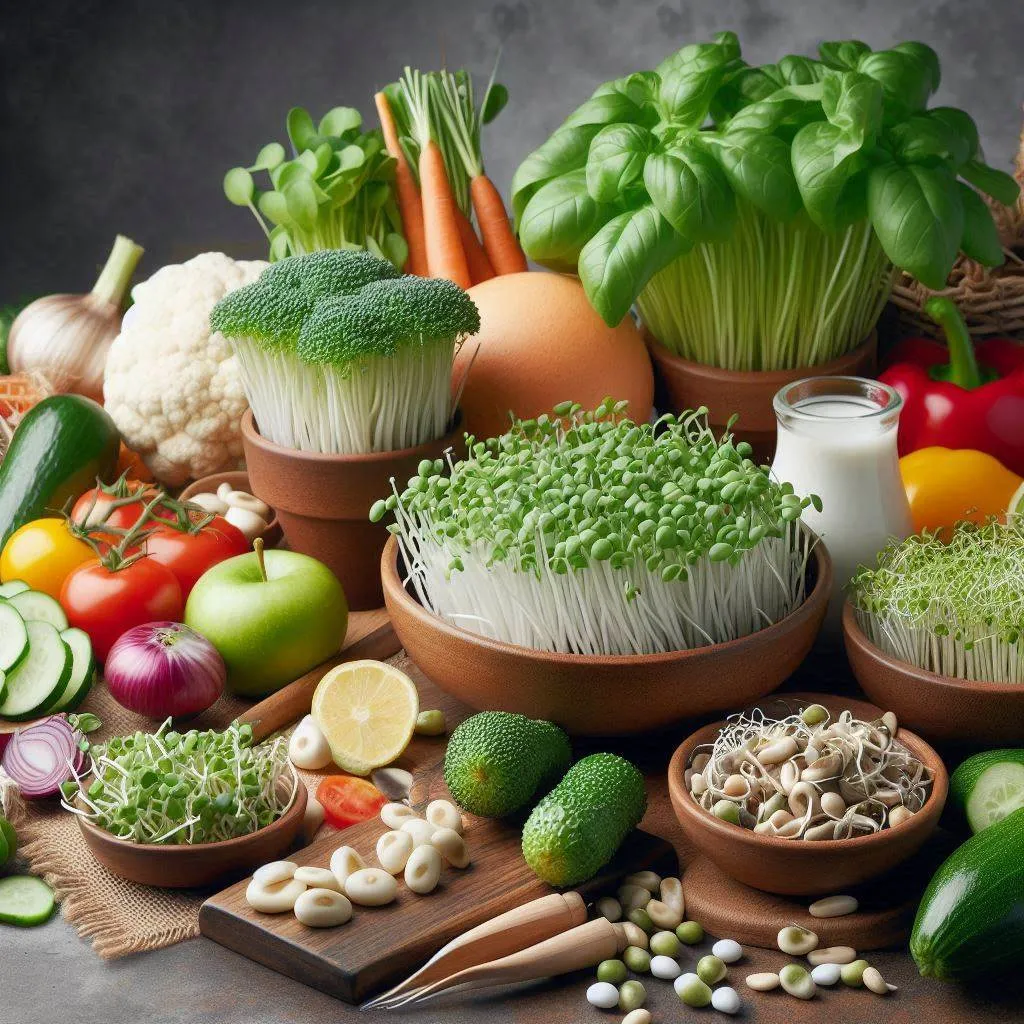
B. Difference between living foods and regular foods
Living foods are different from regular foods in a few key ways:
- Freshness: Living foods are consumed shortly after harvesting, while they’re still growing.
- Processing: They’re not cooked or processed, keeping their nutrients intact.
- Enzyme content: Living foods have active enzymes that can aid digestion.
- Nutrient density: They often have higher levels of vitamins and minerals.
C. Brief history and cultural significance
People have been eating living foods for thousands of years. Many ancient cultures recognized the power of sprouted foods:
- In ancient China, sailors ate bean sprouts to prevent scurvy.
- The Essenes, an ancient Jewish sect, were known for their “Essene bread” made from sprouted wheat.
- In India, sprouted beans have long been a part of traditional diets.
Today, living foods are gaining popularity as people seek more natural and nutritious ways of eating.
III. The Sprouting Process
A. How sprouting works (brief explanation)
Sprouting is like waking up a sleeping seed. Here’s what happens:
- Seeds are soaked in water, which triggers them to start growing.
- The seed breaks open, and a tiny shoot emerges.
- As the sprout grows, it uses the nutrients stored in the seed.
- This process changes the seed’s makeup, often boosting its nutritional value.
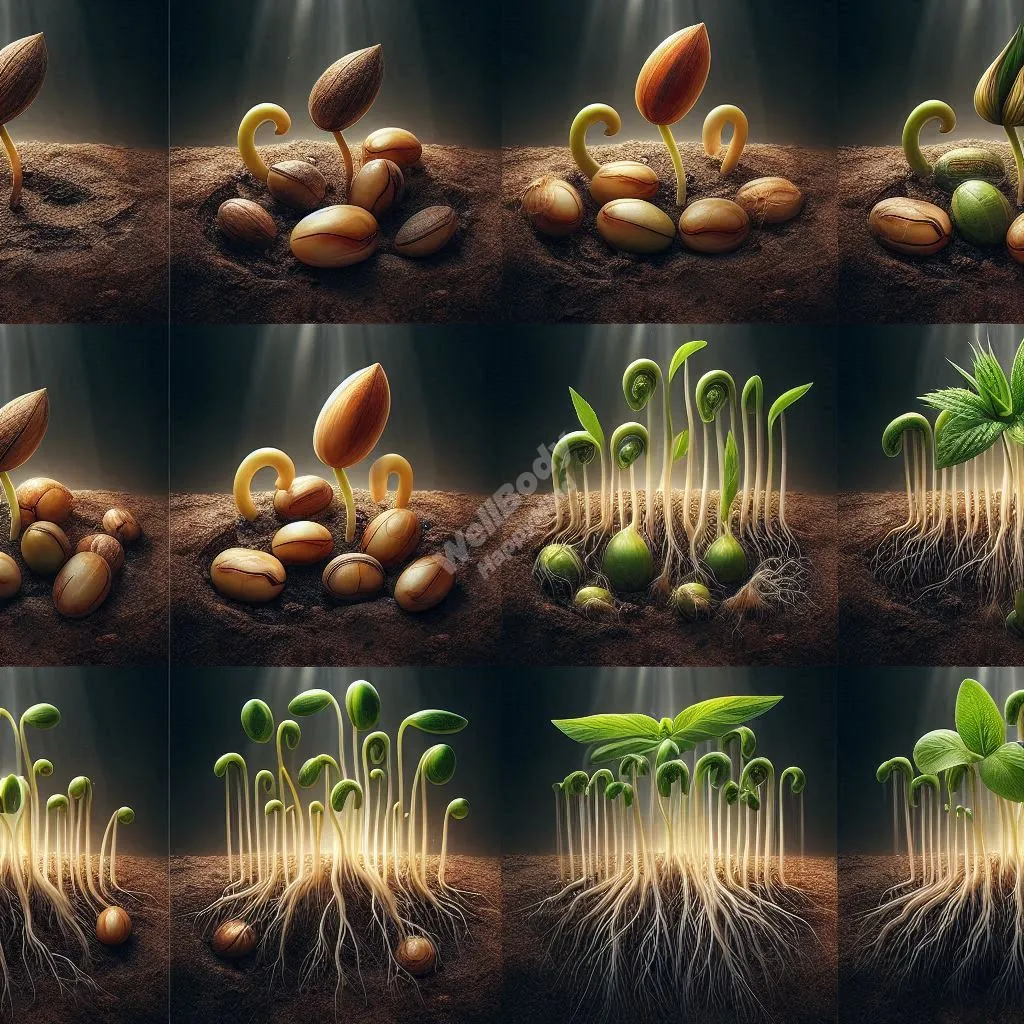
B. Common foods that can be sprouted
Many foods can be sprouted, including:
- Grains: wheat, barley, oats, quinoa
- Legumes: lentils, chickpeas, mung beans
- Nuts: almonds, pumpkin seeds, sunflower seeds
- Seeds: chia, flax, sesame
- Vegetables: broccoli, radish, onion
C. Brief history and cultural significance
Sprouting has been used for thousands of years in various cultures:
- In ancient Egypt, sprouted wheat was used to make bread.
- Traditional Chinese medicine has long recognized the health benefits of sprouts.
- During World War II, Dr. Clive McKay brought sprouting to Western attention with his “sprouted soy” experiments.
Today, sprouting is becoming more popular as people learn about sprouted foods nutrition and the benefits of living foods.
IV. Nutritional Benefits of Sprouted Foods
A. Increased vitamin content
Sprouting can significantly boost the vitamin content of foods. For example:
- Vitamin C levels can increase by up to 600% in some sprouts
- B vitamins, especially B2, B5, and B6, often increase during sprouting
B. Enhanced mineral absorption
Sprouting breaks down compounds that can interfere with mineral absorption, making minerals more available to our bodies. This includes:
- Iron
- Zinc
- Calcium
- Magnesium
C. Improved protein quality
Sprouting can increase the quality and quantity of protein in foods:
- It can boost protein content by up to 30% in some cases
- The sprouting process creates new amino acids, improving overall protein quality
D. Higher enzyme activity
Enzymes help with digestion and other bodily functions. Sprouted foods are rich in active enzymes, which may:
- Aid digestion
- Support nutrient absorption
- Boost overall metabolism
E. Reduced antinutrients
Sprouting reduces antinutrients (compounds that can interfere with nutrient absorption) such as:
- Phytic acid
- Tannins
- Enzyme inhibitors
Table: Comparison of nutrient content in sprouted vs. non-sprouted foods
| Nutrient | Non-Sprouted | Sprouted | Increase |
|---|---|---|---|
| Vitamin C | 100% | Up to 600% | 500% |
| Vitamin B2 | 100% | Up to 515% | 415% |
| Vitamin B5 | 100% | Up to 200% | 100% |
| Protein | 100% | Up to 130% | 30% |
| Fiber | 100% | Up to 133% | 33% |
Note: Exact increases vary depending on the type of food and sprouting conditions.
These nutritional benefits of sprouted foods contribute significantly to the overall benefits of living foods in our diet.
V. Health Benefits of Consuming Living Foods
A. Improved digestion
Eating sprouted foods and other living foods can help your digestion in several ways:
- The active enzymes in sprouts can help break down food more easily
- Increased fiber content supports healthy bowel movements
- Reduced antinutrients make the food easier for your body to process
B. Better nutrient absorption
When you eat sprouted foods, your body can take in more of the good stuff:
- Minerals like iron and zinc are more easily absorbed
- Increased vitamin content means more nutrients available to your body
- Improved protein quality leads to better use of amino acids
C. Potential weight management support
Living foods might help you maintain a healthy weight:
- They’re often lower in calories but high in nutrients
- The fiber content can help you feel full and satisfied
- Some studies suggest that sprouted foods may help regulate blood sugar, which can affect appetite

D. Possible immune system boost
Sprouted foods may give your immune system a helping hand:
- Higher vitamin C content can support immune function
- Some sprouts contain compounds that may have antioxidant properties
- The overall increase in nutrients can help keep your body strong and healthy
E. Antioxidant properties
Many living foods, especially sprouts, are rich in antioxidants:
- These compounds help protect your cells from damage
- They may play a role in reducing inflammation in the body
- Some research suggests antioxidants could help lower the risk of certain chronic diseases
Remember, while these benefits are promising, it’s important to eat a varied diet and not rely solely on any one food group for all your nutritional needs.
VI. How to Incorporate Sprouted Foods into Your Diet
A. Store-bought options
You can easily find sprouted foods in many grocery stores. Here are some common options:
- Sprouted bread and wraps
- Sprouted grain cereals
- Packaged sprouts (like alfalfa or broccoli sprouts)
- Sprouted nuts and seeds
- Sprouted bean products
B. DIY sprouting at home
You can also sprout foods at home. Here’s a simple step-by-step guide:
- Choose your seeds (e.g., lentils, alfalfa, or mung beans)
- Rinse the seeds and soak them in water overnight
- Drain and rinse the seeds
- Place them in a jar covered with a mesh lid or cheesecloth
- Rinse and drain the seeds twice a day
- In 2-5 days, depending on the seed, your sprouts will be ready
- Give them a final rinse, dry them, and enjoy!
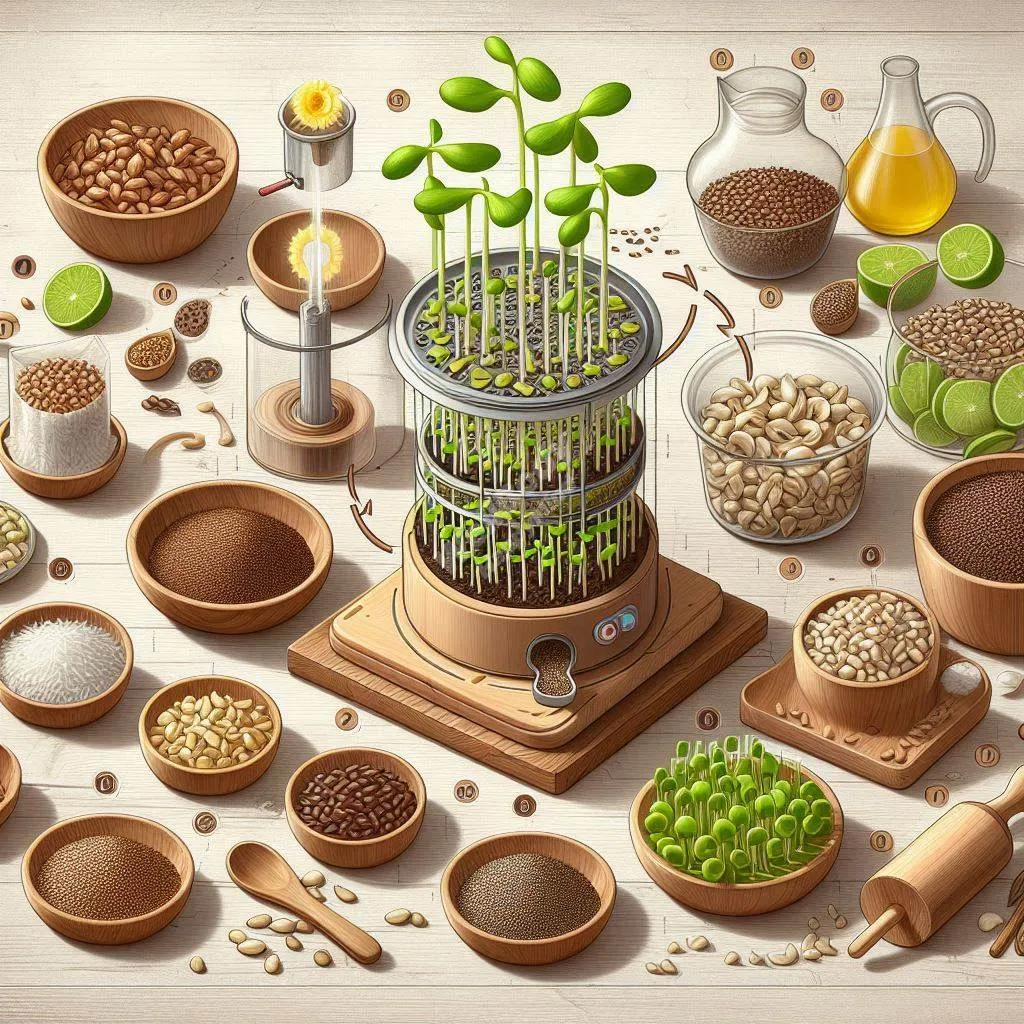
C. Recipes and meal ideas
Here are some simple ways to add sprouted foods to your meals:
- Sprouted Grain Toast: Top sprouted bread with avocado, tomato, and a sprinkle of salt for a nutritious breakfast.
- Sprout Salad: Mix various sprouts with chopped vegetables and a light dressing for a crunchy, nutrient-packed salad.
- Smoothie Boost: Add a handful of mild sprouts (like alfalfa) to your morning smoothie for extra nutrients.
- Sprouted Hummus: Use sprouted chickpeas to make homemade hummus for a digestive-friendly dip.
Remember, incorporating sprouts in your diet doesn’t have to be complicated. Start small and gradually increase as you get used to the flavors and textures.
VII. Precautions and Considerations
A. Food safety concerns
While sprouted foods are generally safe, there are some things to keep in mind:
- Sprouts can sometimes harbor bacteria like Salmonella or E. coli
- The warm, moist conditions needed for sprouting can also encourage bacterial growth
- It’s especially important to be careful with raw sprouts
B. Who should be cautious with sprouted foods
Some people should be extra careful or avoid raw sprouts:
- Pregnant women
- Young children
- Older adults
- People with weakened immune systems
These groups are more vulnerable to foodborne illnesses that could potentially come from contaminated sprouts.
C. Tips for safe sprouting at home
If you choose to sprout at home, follow these safety tips:
- Use clean water and equipment
- Wash your hands before handling seeds or sprouts
- Rinse sprouts thoroughly at least twice a day
- Keep sprouting containers away from potential contaminants
- Consume homemade sprouts within a few days
- If sprouts smell bad or look slimy, throw them out
Remember, cooking sprouts can kill harmful bacteria. If you’re concerned about food safety, consider lightly cooking your sprouts before eating.
VIII. Conclusion
Sprouted foods and living foods are truly nature’s nutritional powerhouses. As we’ve explored, the benefits of living foods go far beyond just adding crunch to your salad. From boosted vitamin content to improved digestion, sprouted foods nutrition offers a wide range of health advantages.
Remember, incorporating sprouts in your diet doesn’t have to be complicated. Whether you’re buying sprouted bread at the store or growing your own alfalfa sprouts at home, there are many simple ways to enjoy these nutritious foods.
By adding sprouted foods to your meals, you’re not just following a trend – you’re tapping into an ancient practice that can significantly improve your overall health and wellbeing. So why not give sprouted foods a try? Your body might just thank you for it!

IX. FAQs about Sprouted Foods
- Are sprouted foods safe to eat raw?
Generally, sprouted foods are safe to eat raw. However, there’s a small risk of bacterial contamination. If you’re pregnant, elderly, very young, or have a weakened immune system, it’s best to cook sprouts before eating them.
- How long do homemade sprouts last?
Homemade sprouts typically last 3-7 days when stored properly in the refrigerator. Always check for signs of spoilage (like a bad smell or slimy texture) before eating.
- Can I sprout any type of seed?
While many seeds can be sprouted, not all are safe or ideal for sprouting. Stick to seeds specifically sold for sprouting, as these are tested for safety and germination rate.
- Do sprouted foods have more calories than non-sprouted foods?
Usually not. The sprouting process often reduces the calorie content slightly while increasing nutrient density. This makes sprouted foods great for those watching their calorie intake.
- Can sprouting make foods easier to digest?
Yes! Sprouting breaks down some of the complex sugars and starches in foods, potentially making them easier to digest. This is especially beneficial for people who have trouble digesting certain grains or legumes.

